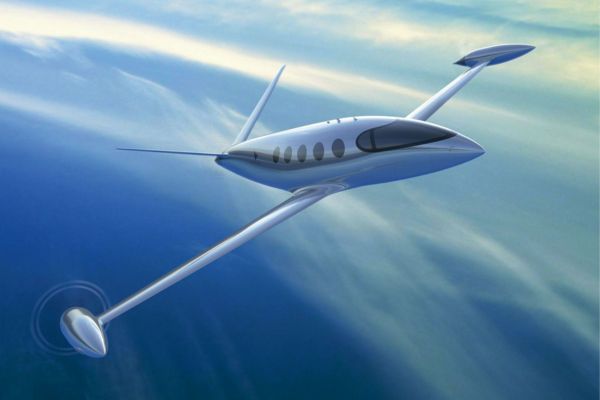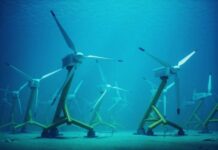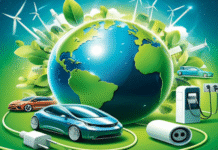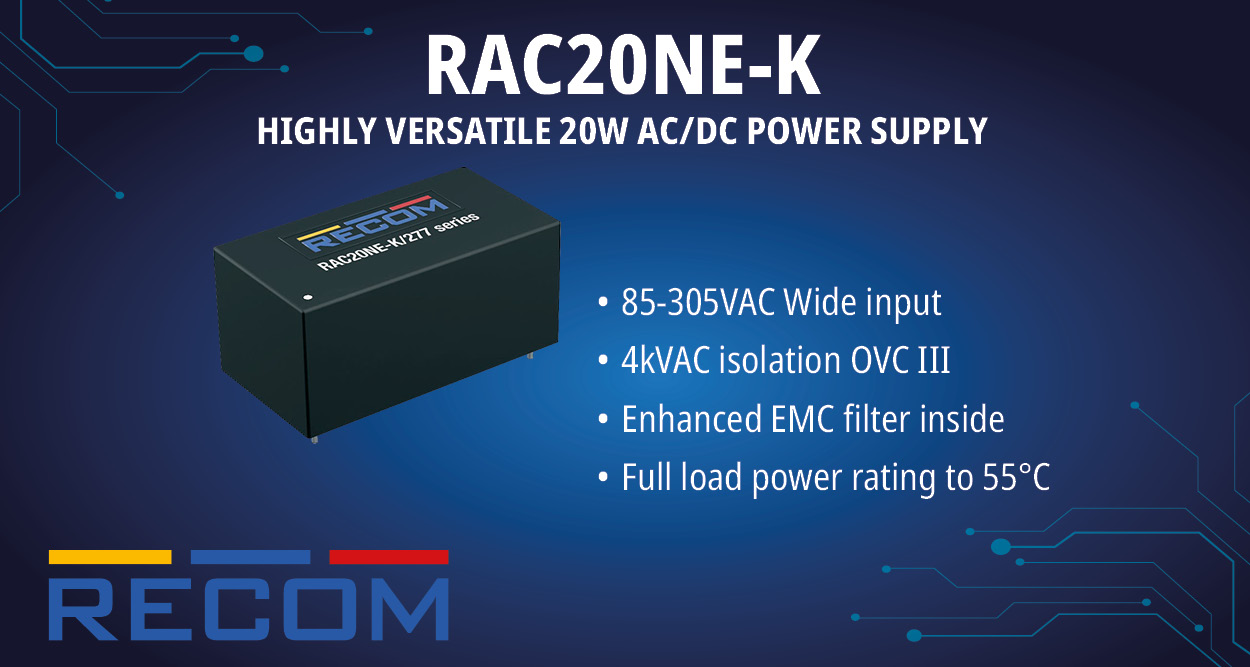The global electric aircraft market size is forecasted to reach around USD 71.19 billion by 2034 and is growing at a compound annual growth rate (CAGR) of 20.02% from 2025 to 2034.
The electric aircraft market is experiencing substantial growth, fueled by a rising demand for sustainable and environmentally friendly aviation solutions. As climate change concerns intensify, the aviation industry is increasingly turning to electric propulsion to cut carbon emissions. Advances in battery technology and electric motor design are accelerating the development of electric aircraft, leading to a wave of innovation and investment across the sector.
Both startups and established aerospace giants are actively developing electric aircraft, with numerous prototypes already in the testing phase. Regulatory support is also playing a pivotal role, as governments worldwide introduce initiatives and targets aimed at reducing aviation’s environmental impact. According to our analysts, electric aircraft have the potential to revolutionize regional air travel by providing quieter, more cost-effective, and eco-conscious alternatives to traditional aircraft. The market is poised for rapid expansion, especially in areas like urban air mobility and short-haul transportation.
What Are Electric Aircraft?
Electric aircraft are powered by electric motors, which derive energy from batteries or alternative electric propulsion systems. They offer a cleaner alternative to conventional aircraft that rely on fossil fuels. These aircraft are being designed for a range of applications, including regional passenger transport, cargo delivery, and urban air mobility. Their key advantages include lower carbon emissions, reduced noise pollution, and decreased operating costs. Electric aircraft range from small drones to larger commercial airliners, with continuous technological progress improving their performance and efficiency.
Electric Aircraft Market Report Highlights (2024)
- North America led the market with the highest revenue share of 35.2%.
- Europe followed with the second-highest share at 28.3%.
- In terms of system components:
- The batteries segment accounted for 32% of market revenue.
- The aerostructure segment contributed 27% to market revenue.
Key Trends Shaping the Electric Aircraft Market
1. Noise Reduction and Urban Integration
Electric aircraft operate more quietly than their traditional counterparts, making them ideal for use in noise-sensitive areas such as cities and near airports. This advantage supports their adoption in urban air mobility and regional transport, where community acceptance is crucial.
2. Improved Airspace Efficiency
Electric vertical take-off and landing (eVTOL) aircraft can leverage underused airspace, allowing for more direct routes and easing congestion in crowded urban environments. This leads to more efficient urban transport networks and optimized airspace usage.
3. Energy Independence and Cost Stability
By reducing reliance on fossil fuels, electric aircraft enhance energy security and resilience. They help operators avoid the volatility of fuel prices and supply disruptions, offering more predictable and stable operational costs.
4. Boosting Regional Connectivity
Electric aircraft offer affordable and sustainable transport options for underserved or remote areas, enhancing regional connectivity. This can promote local economic development, improve access, and boost tourism in emerging markets where conventional infrastructure is limited.
5. Integration with Renewable Energy
There is strong potential to power electric aircraft with renewable energy sources such as wind or solar. This integration can support carbon-neutral—or even carbon-negative—operations, positioning electric aviation as a central player in achieving global sustainability goals.
Electric Aircraft Market – Segmental Analysis
By Type
- Fixed-Wing Aircraft: Fixed-wing electric aircraft resemble traditional airplanes but run entirely on electric propulsion. Current trends center around enhancing battery energy density and efficiency to extend flight range and operational capacity. These advancements are positioning fixed-wing electric aircraft as a strong contender for regional and short-haul commercial travel.
- Rotary-Wing Aircraft: This category includes electric helicopters and eVTOLs (electric Vertical Take-Off and Landing aircraft). Development in this segment is driven by the demand for quieter, more energy-efficient solutions suitable for urban air mobility and cargo services. A key focus is on reducing noise and optimizing propulsion systems for frequent take-offs and landings in dense urban environments.
- Hybrid-Wing Aircraft: Hybrid-wing electric aircraft blend features of both fixed- and rotary-wing designs, offering a balance of versatility and performance. Ongoing innovation is geared toward integrating hybrid-electric propulsion systems that support longer ranges while maintaining adaptability for varied mission types, such as regional connectivity and aerial surveillance.
By System
- Batteries – 32% Market Share (2024): As the most crucial component, battery technology continues to evolve with a focus on higher energy densities, quicker charging times, and better safety standards. A key trend is the adoption of solid-state batteries, promising lighter weight and greater storage capacity for longer, more efficient flights.
- Electric Motors – 22% Market Share (2024): Electric motor development is centered around increasing power output while reducing size and weight. Trends include the rise of compact, high-power-density motors designed to maximize aircraft performance and overall energy efficiency.
- Aerostructures – 27% Market Share (2024): Aerostructure advancements focus on lightweight materials like carbon fiber and novel manufacturing techniques such as 3D printing. These innovations enhance aerodynamics, reduce drag, and support longer flight ranges, all while improving aircraft structural strength.
- Avionics – 13% Market Share (2024): Avionics systems are being optimized for electric aircraft with smart power management and automated control systems. Current trends include the integration of intelligent flight systems that boost safety, efficiency, and real-time diagnostics for electric operations.
- Others – 6% Market Share (2024): This category includes support systems such as charging infrastructure and thermal management. Innovations are addressing battery temperature control and grid connectivity, both essential for ensuring aircraft safety, performance, and reusability.
By Technology
- CTOL (Conventional Takeoff and Landing): Electric CTOL aircraft use standard runways and are being enhanced through improved battery capacity and propulsion systems. The goal is to increase range and payload, making them viable for regional routes. Regulatory agencies are adapting certification processes to accommodate these electric platforms.
- STOL (Short Takeoff and Landing): Electric STOL aircraft are designed for operations on shorter or unpaved runways, ideal for remote and rural access. Innovations are focused on improving power-to-weight ratios and energy efficiency to ensure safe and flexible operations, even in areas with limited infrastructure.
- VTOL (Vertical Takeoff and Landing): VTOL and eVTOL aircraft eliminate the need for runways, making them perfect for urban air mobility. The segment is driven by developments in battery life, propulsion reliability, and autonomous navigation, with key trends focusing on redundancy, flight safety, and scalable design for passenger and cargo transport.
By End User
Commercial Aviation: Electric aircraft in commercial use aim to reduce emissions and operating costs, particularly for short-haul routes. Airlines are collaborating with manufacturers to accelerate the adoption of hybrid-electric aircraft, with an emphasis on regional sustainability and regulatory compliance.
Urban Air Mobility (UAM): UAM focuses on electric aircraft for intra-city travel, aimed at easing traffic congestion and lowering emissions. Investments are being made in air taxi infrastructure, including charging stations and air traffic integration, alongside the establishment of regulatory frameworks to govern urban flight.
Military and Defense: Electric aircraft in defense are primarily used in UAVs (Unmanned Aerial Vehicles) and intelligence missions. Key trends include the push for hybrid-electric UAVs with extended flight endurance and lower logistical dependency, supporting both surveillance and tactical operations.
Others: This segment includes recreational aircraft, gliders, and research-specific platforms. Trends here are driven by advances in lightweight materials and energy-efficient battery systems, allowing longer flight durations and greater adaptability across specialized use cases.
Electric Aircraft Market – Regional Analysis
North America: Market Leader
- 2024 Market Size: USD 4.04 Billion
- 2034 Forecast: USD 25.06 Billion
North America holds a dominant position thanks to strong government backing, R&D investment, and strategic partnerships between legacy aerospace firms and innovative startups. The region is heavily focused on building the infrastructure required for electric aviation, such as widespread charging networks and urban mobility testing zones.
Europe: Sustainability-Driven Growth
- 2024 Market Size: USD 3.25 Billion
- 2034 Forecast: USD 20.15 Billion
Europe is rapidly advancing sustainable aviation through public funding and stringent environmental policies. Collaborative efforts among aerospace companies and academic institutions are focused on battery development and hybrid propulsion. The region is a global leader in eVTOL development, with supportive regulation paving the way for UAM adoption.

















